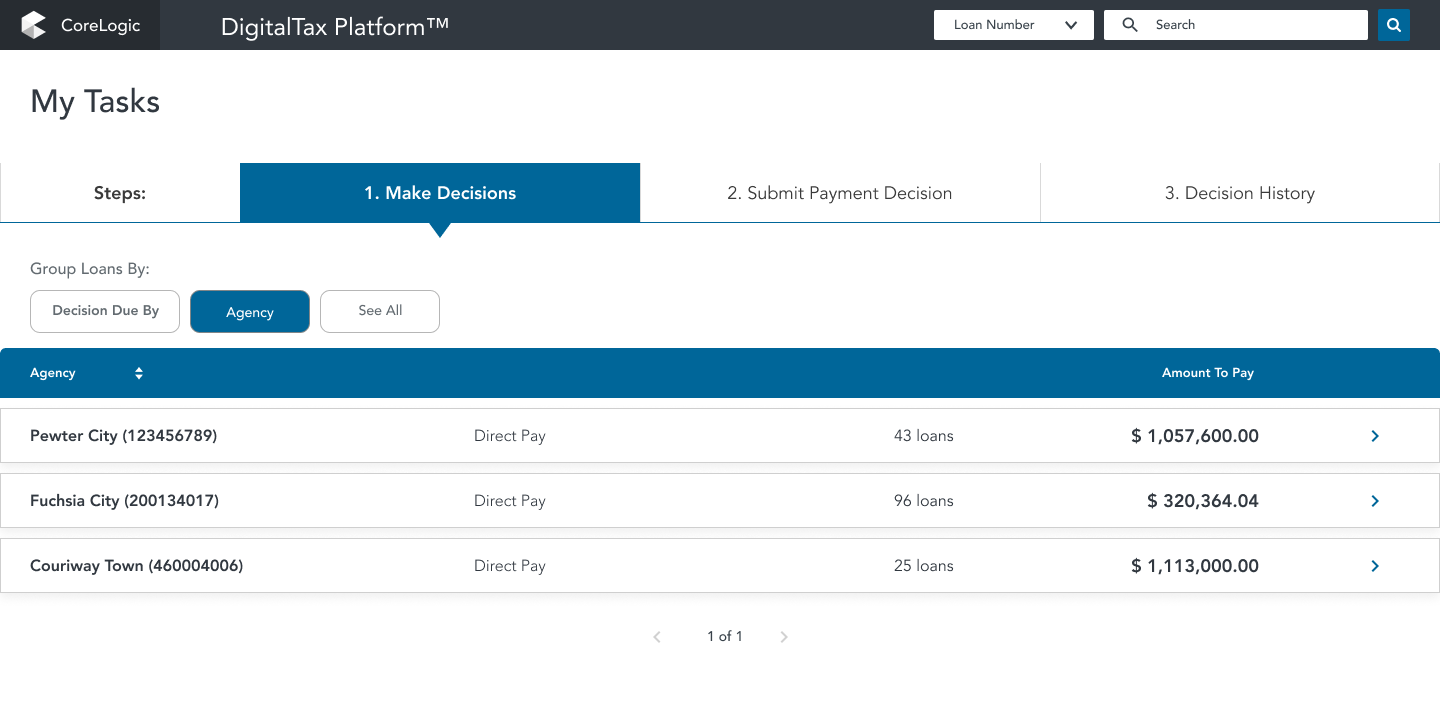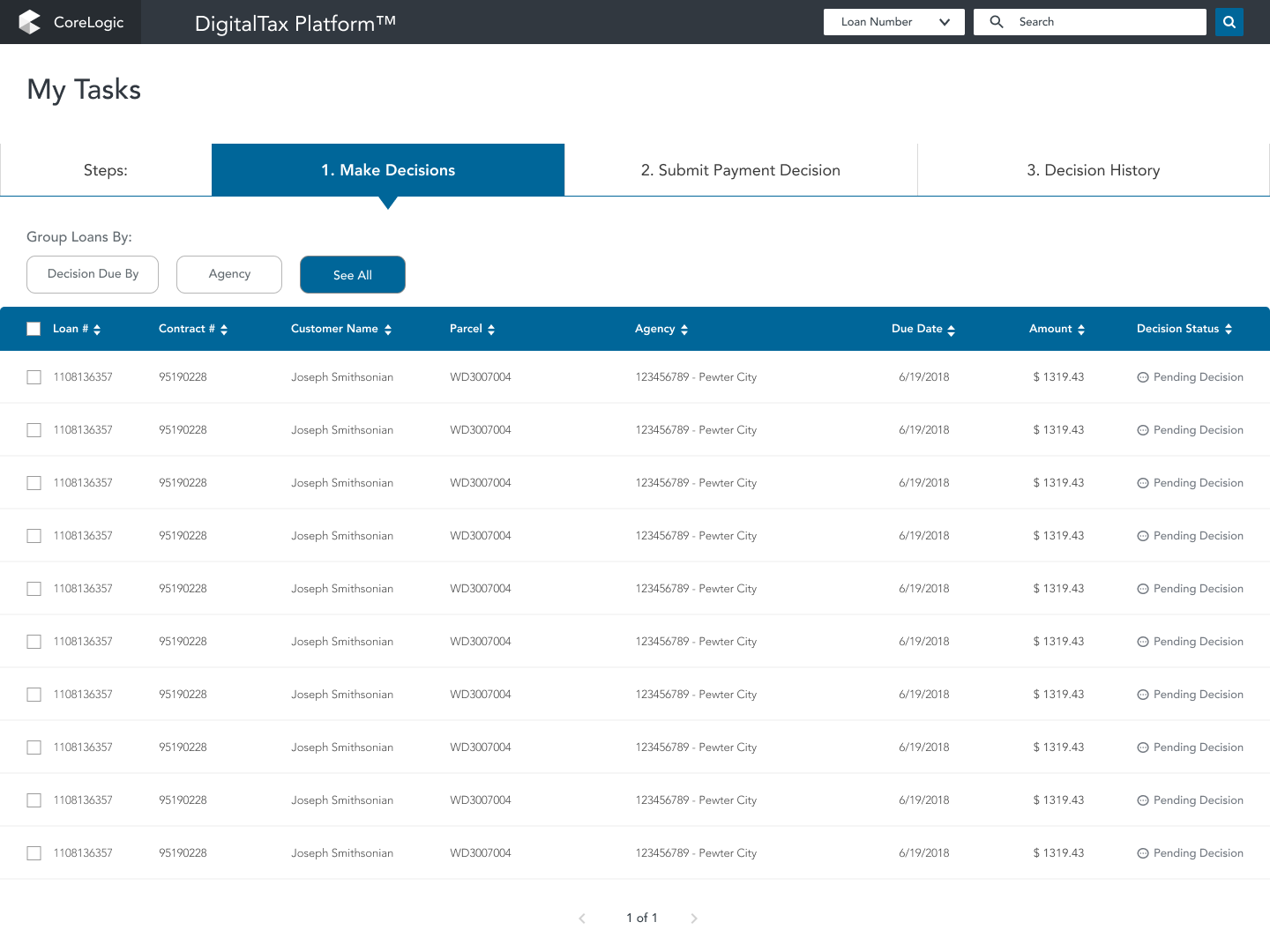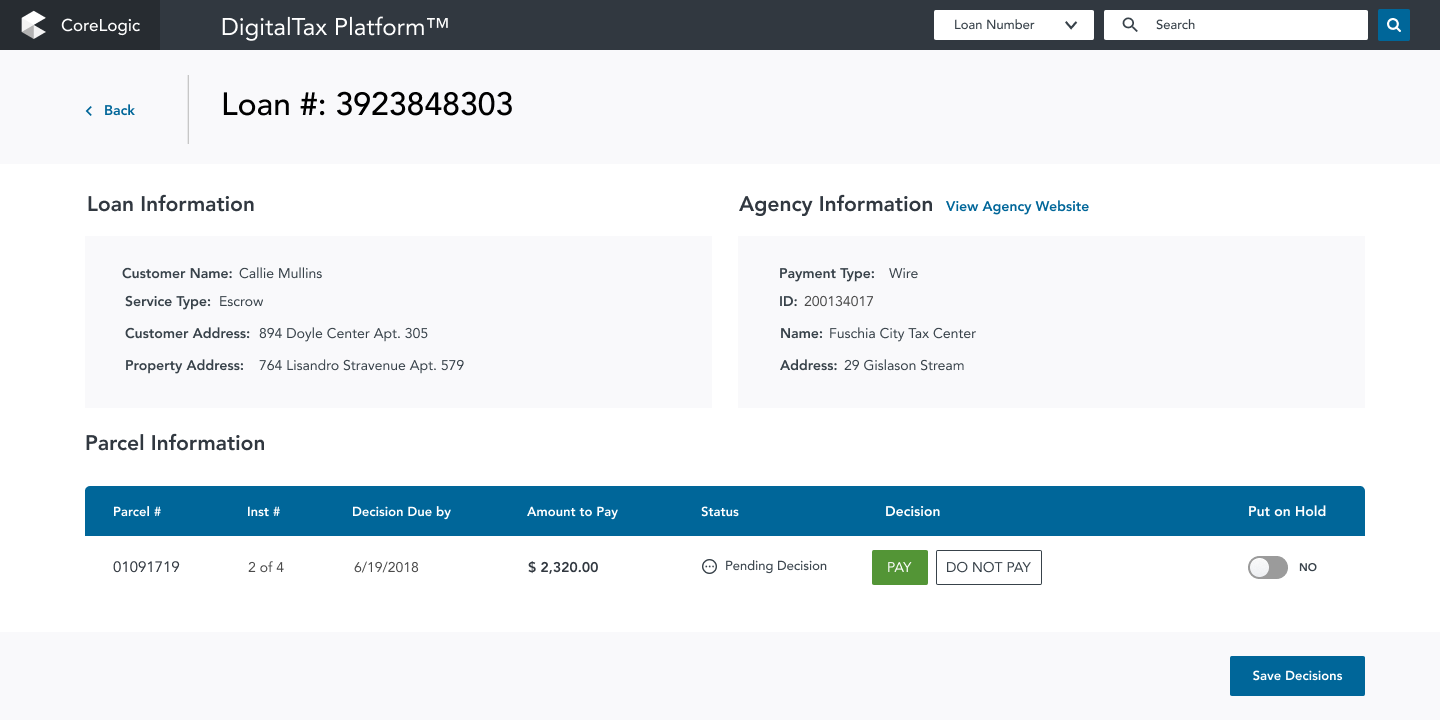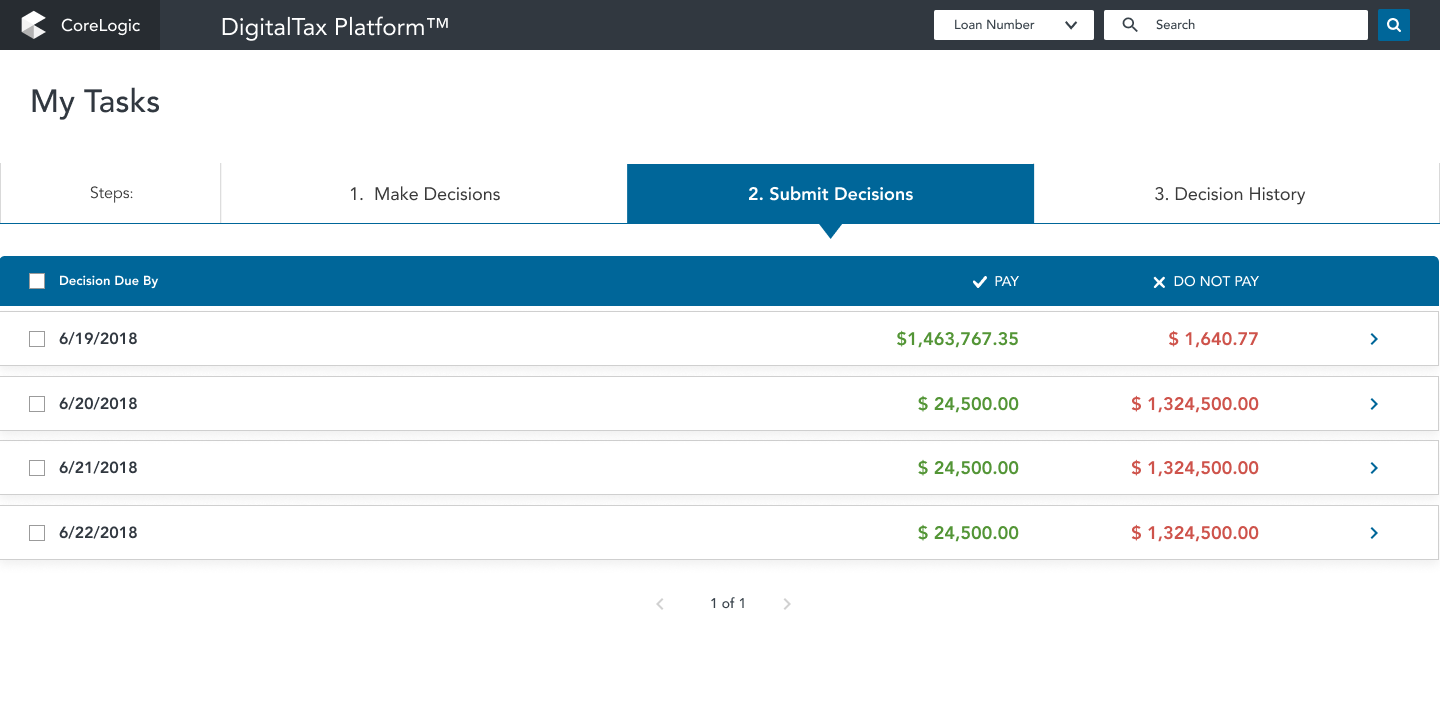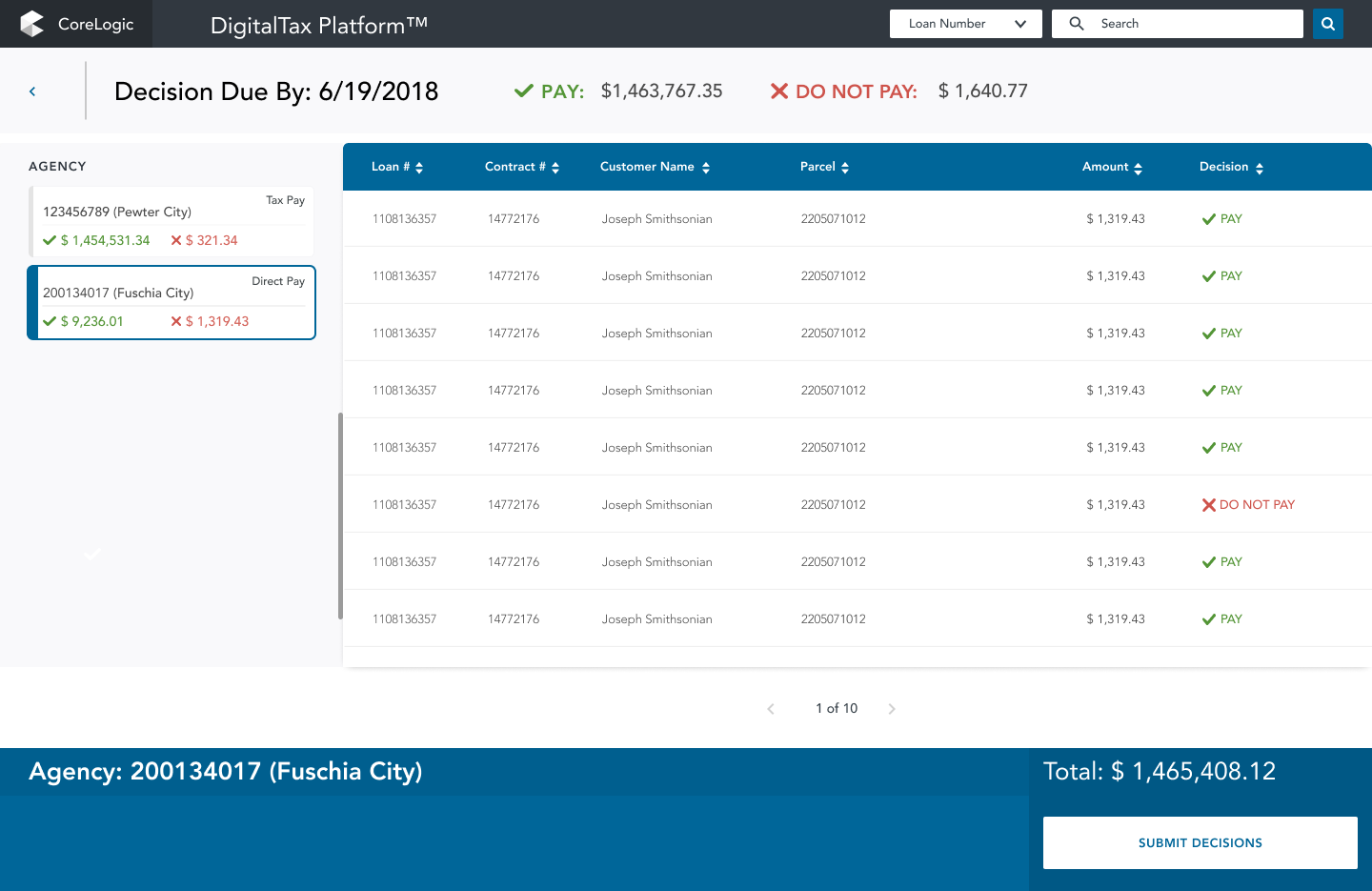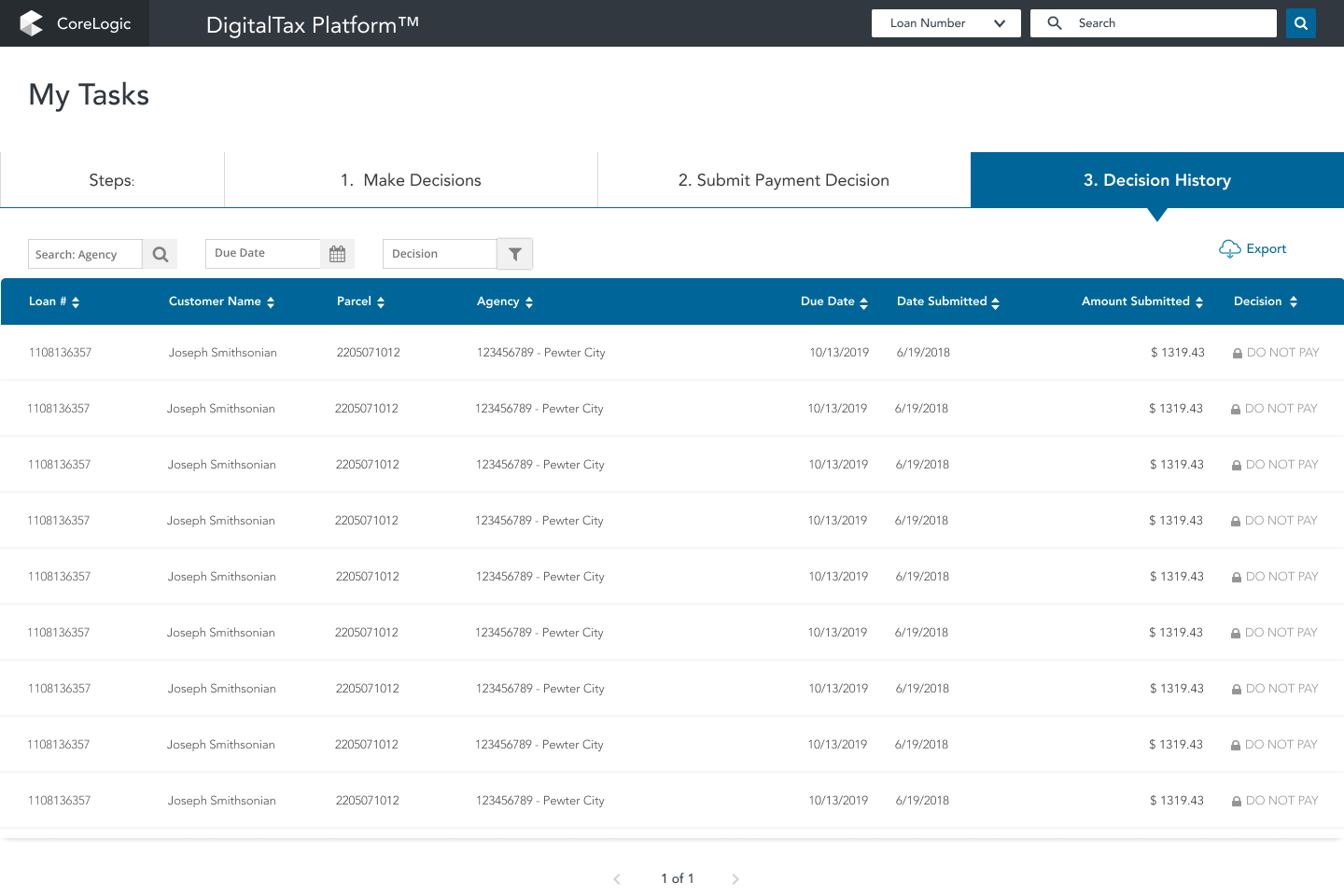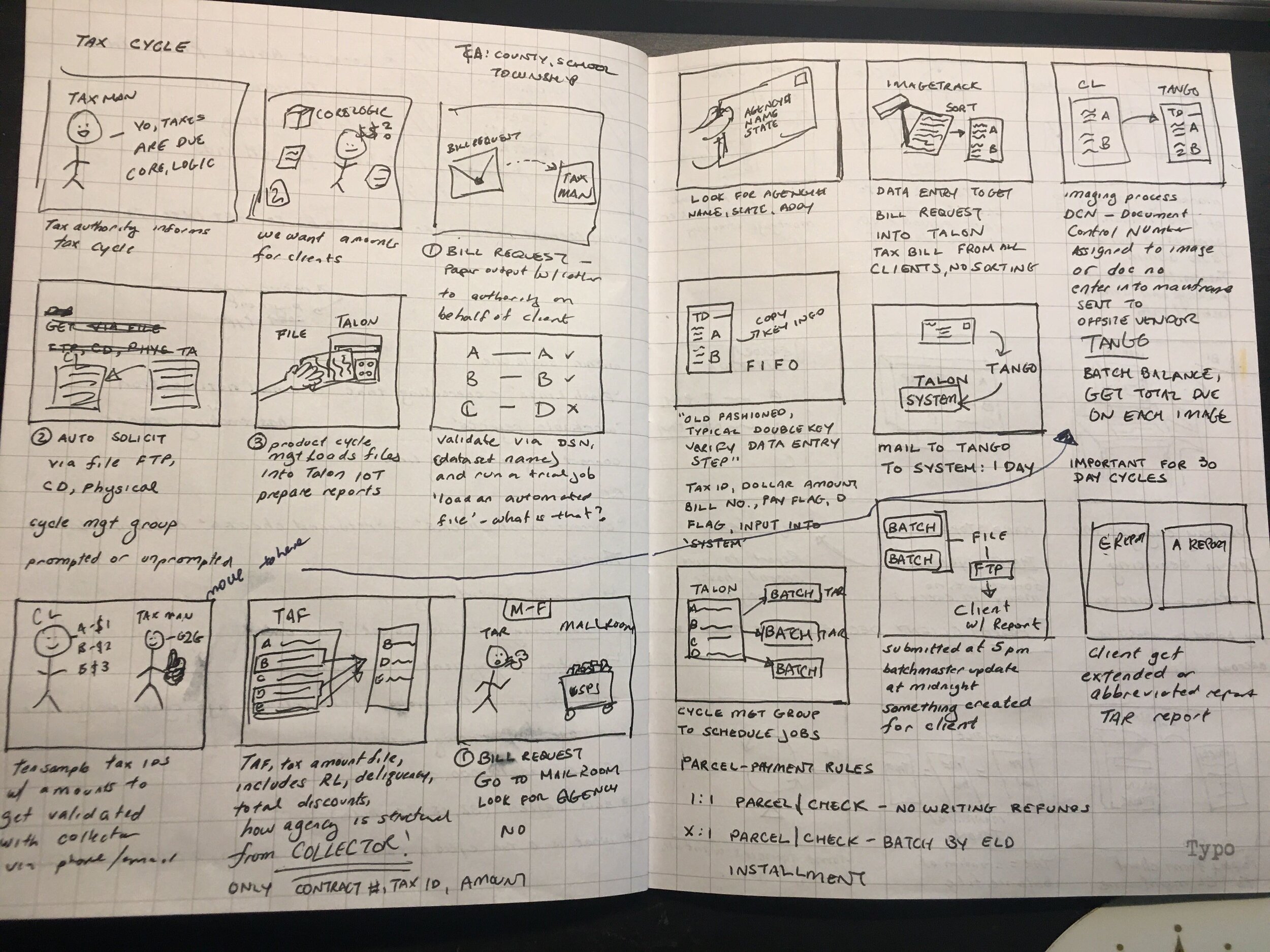CoreLogic - Digital Tax Portal
Transformed a $152 billion process for municipalities and tax authorities
CoreLogic, a real estate data aggregator and processor, generates a majority of its revenue through its property tax business. It services 80% of U.S. mortgages and supports over 22,000 taxing agencies in the U.S.
In 2019, a team of designers and I built the digital tax portal and delivered it to local municipalities and counties from LA County to Rochester, NY. Traditionally, property tax processing and reporting relies on a combination of 50 year-old databases, VBA macros, and paper-and-pen. By the end of our beta period, 97% of our client decisions were being done through the portal rather than traditional methods.
It was at CoreLogic that I formed my core design beliefs: understand the business and what generates revenue, conduct lean and continuous research, and deliver small but functional features.
Understanding the business
I spent a lot of time during research understanding the immensely complex process of property tax collection and reporting in the United States. It is a process that sees money and data exchange with over a dozen business functions in CoreLogic alone even before considering the outside participants. One change in process (as our product was doing) impacted multiple stakeholders and every step of the service design journey had to be considered.
By creating storyboards and technical flows, the team and I were better able to visualize how the design and technical decisions impacted the business and what technology bottlenecked us.
Research-driven design, De-risked development
Working in three-week sprints, we conducted in-person contextual inquiries in LA County and Bakersfield as well as remote ones in Indiana and New York. From there, we were able to design, test, iterate, and release features in two sprints. The speed and size in which we released features became the benchmark for how I knew product teams can operate.
Since then, I have built out multiple teams at Solvvy and Zoom with the same core design beliefs: understand the business and what generates revenue, conduct lean and continuous research, and build small but functional features.
